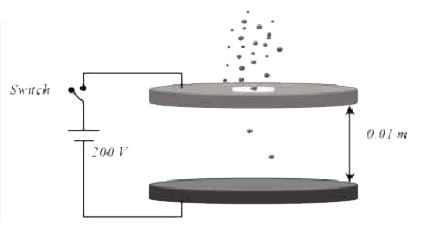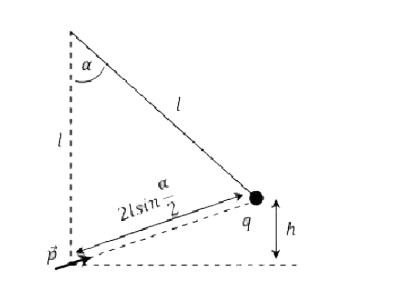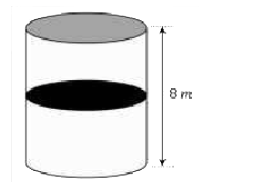Complete Solutions to SECTION 1 of chapter JEE (ADVANCE) 2020 of Class 12 book with complete answers and questions
| Class 12 | PHYSICS |
| Chapter | JEE (ADVANCE) 2020 |
| JEE ADVANCED PREVIOUS YEAR | SECTION 1 |
| Number Of Questions | 6 |
| Academic Year | 2023-24 |
A large squre container with thin transparent vertical walls and filled with water ( refractive index `(4)/(3)`) is kept on a horizontal table . A student holds a thin straight wire vertically inside the water 12cm from one of its corners, as shown schematically in the figure . Looking at the inside the water 12 cm from one of its corners, as shown schematically in the figure . Looking at the wire from this corner, another student sees two images of the wire , located symmetrically on each side of the line of sight as shown. THe separation (in cm) between these images is _______ .
View SolutionA train with cross - sectional are `S_(t)` is moving with speed `v_(i)` inside a long tunnel cross - sectional area `S_(0)(S_(0) - 4S_(l))`. Assme that almost all the air (density `rho`) in front of the train back between its sides and the wall of the tunel. Also the air flow with respect to the train is steady and laminar . Take the ambient pressure and that inside the train to be `p_(0)`. If the pressure in the region between the sides of the train and the tunnel wall is p , then `p_(0) - p = (7)/(2N) rhov_(t)^(2)` .Then value of N is ________
View SolutionTwo large circular discs separated by a distance of 0.01 m are connected to a battery via a switch a shown in the figure. Charged oil drops of density `900 kg m^(-3)` are releasd through a tinly hole at the centre of the top disc . Once some oil drops achieve terminal velocity , the swith is closed to apply a voltage of 200 V across the disc. As a result an oil drop of radius `8 xx 10^(-7)` m stops moving vertically and floats between the discs. The number of electrons present in this oil drop is ________. (neglect the buoyancy force, take acceleration due to gravity ` = 10 ms^(-2)` and charge on an electron (e) ` = 1.6 xx 10^(-9) (C)`

View SolutionA hot air balloon is carrying some passengers , and a few sandbage of mass 1kg each so that its total mass is 480 kg . Its effective volume giving the balloon its buoyancy is V. The balloon rises to a new equilibrium height close to 150 m with its volume remining unchange . If the variation of the density of air with height h from the ground is `rho (h) = rho_(o) e` , where `rho_(0) = 1.25 kg m^(-3)` hu = 6000 m, the vlaue of N is ______________ .
View SolutionA point charge q of mass m is suspended vertically by a string of length l . A point dipole of dipole moment p is now brought towards q from inifinty so that charge moves aways. The final equilibrium position of the system including the direction of the dipole , the angles and distance is shown in the figure below . If the work done in brining the dipole to this position is N `xx ` (mgh) . where g is the acceleration due to gravity , then the value of N is _______ . (Note that for three coplanar forcess keeping a point mass in equilibrium `(F)/(sin theta)` is the same for all forces, where F is any one of the forces and `theta` is the angle between the other two forces ).

View SolutionA thermally isolated cylindrical closed vessel of height 8 m is kept vertically . It is divided into two equal parts by a diathermic (perfect conductor) frictionless partition of mass 8.3 kg . Thus the partition is held initially at a distance of 4 m from the top , as shown in the schematic figure below . Each o the two parts of the vessel contians 0.1 mole of an ideal gas at temperature 300 K. The partition is now released and moves without any gas leaking from one part of the vessel to the other . When equilibrium is reached, the distance of the parition form one part of the vessel to the otehr . When equilibrium is reached the distacne of the partition from the top (in w) will be _______(take the accelearation due to gravity = 10 `ms^(-2)` and the universal gas constant ` = 8.3 J ` mol^(-1) K^(-1)`).

View Solution
SECTION 1 questions and complete solutions for chapter JEE (ADVANCE) 2020 of JEE ADVANCED PREVIOUS YEAR of Class 12